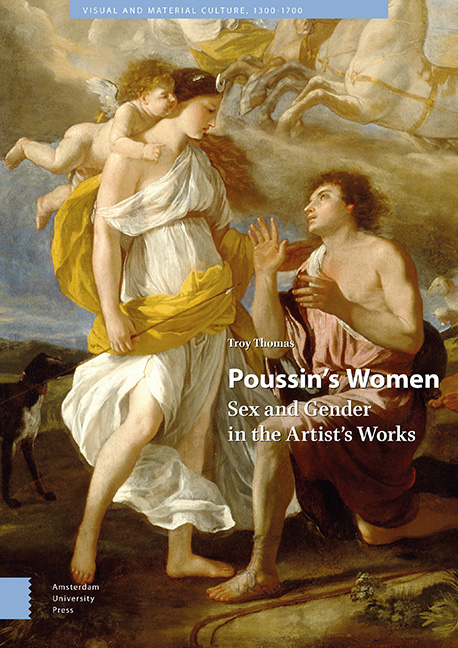Book contents
- Frontmatter
- Contents
- List of Illustrations
- Acknowledgments
- Part I – Violence and Virtue in Poussin’s Representations of Women
- Part II – Poussin’s Women—Cultural and Social Frames
- Part III – Paintings and Drawings
- 1 Predators
- 2 The Lustful—Triumphant, Impulsive, Spying, Conquered
- 3 Lovers—Genuine, Controlling, Unrequited, Jealous
- 4 Killers, Transgressors
- 5 Victims I—Killed, Assaulted
- 6 Victims II—Voiceless, Deceived
- 7 Heroines, Great Ladies
- Conclusion
- Bibliography
- Index
7 - Heroines, Great Ladies
Published online by Cambridge University Press: 20 November 2020
- Frontmatter
- Contents
- List of Illustrations
- Acknowledgments
- Part I – Violence and Virtue in Poussin’s Representations of Women
- Part II – Poussin’s Women—Cultural and Social Frames
- Part III – Paintings and Drawings
- 1 Predators
- 2 The Lustful—Triumphant, Impulsive, Spying, Conquered
- 3 Lovers—Genuine, Controlling, Unrequited, Jealous
- 4 Killers, Transgressors
- 5 Victims I—Killed, Assaulted
- 6 Victims II—Voiceless, Deceived
- 7 Heroines, Great Ladies
- Conclusion
- Bibliography
- Index
Summary
Abstract
Heroic and noble women appear mainly in Poussin's historical and religious works. Women achieve heroic status in his Landscape with the Ashes of Phocion Collected by His Widow, and Coriolanus. What I call “great ladies” appear in Landscape with Numa Pompilius and the Nymph Egeria, and the Arcadian Shepherds (second version). Great ladies are represented in Old Testament scenes such as the Finding of Moses, Eliezer and Rebecca, and Esther Before Ahasuerus. But the Virgin Mary in his New Testament scenes most perfectly fulfills the designation “great lady,” in his Annunciation, Holy Family on the Steps, Assumption of the Virgin, the and The Seven Sacraments: Marriage (two versions).
Keywords: Heroines, Great Ladies, Courage, Wisdom, Majesty
Heroic and noble women appear mainly in Poussin's scenes from Greek and Roman history, allegory, and religion, but hardly ever in his mythologies. Their broad absence from his mythological works reminds us of the degree to which women are depicted as transgressors or victims is such pictures. Women achieve heroic status in two historical works included here. The widow of Phocion risks arrest and performs what may be considered a political act by secretly disinterring her husband's ashes to take them back to her home in Athens in Landscape with the Ashes of Phocion Collected by His Widow (1648, Walker Art Gallery, Liverpool, Fig. 7.1). The painting honors the widow's unadorned private virtue and her devotion to the memory of her husband as she undertakes an act judged to be illegal by the corrupt regime. In Coriolanus (c. 1653, Musée Nicolas Poussin, Les Andelys, Fig. 7.2), the general's wife, mother, and matrons of Rome display their courage by urging him to call off his siege of Rome. Coriolanus's mother was especially eloquent in convincing him to end the invasion. She and the other women displayed their heroism in pleading in the face of male power as potential victims of the force of arms.
What I call ‘great ladies’ are noble and esteemed women who appear in a historical picture, an allegory, and in a number of religious paintings included here.
- Type
- Chapter
- Information
- Poussin's WomenSex and Gender in the Artist's Works, pp. 301 - 340Publisher: Amsterdam University PressPrint publication year: 2020

